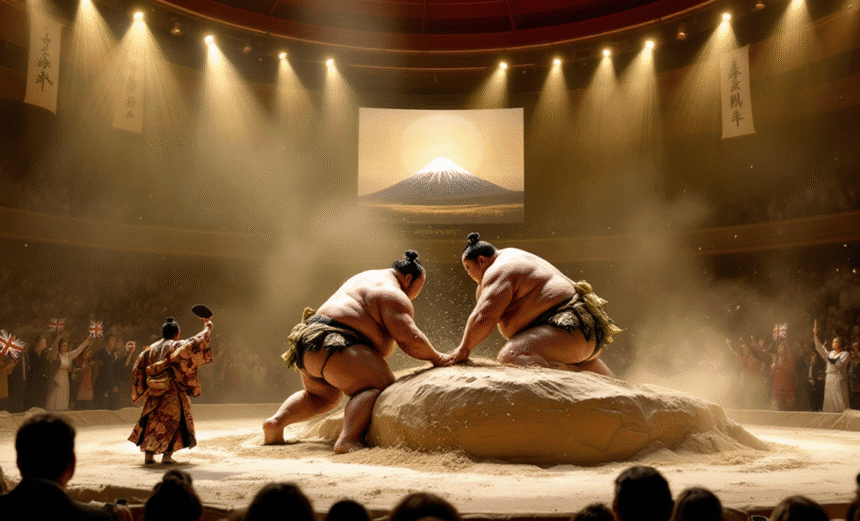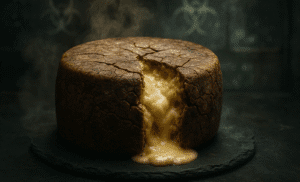The thunderous stomps of rikishi once again echoed through the Royal Albert Hall this week as the Grand Sumo Tournament made its long-awaited return to London after 34 years. From October 15 to 19, the historic venue transformed into a sacred dohyo (sumo ring), welcoming over forty elite wrestlers from Japan in a spectacle that blended ancient ritual, athleticism, and cultural exchange. It marked the first time since 1991 that a full professional basho (tournament) had been held outside Japan, a rare and momentous occasion for both the sport and its global fans.
The event was staged inside the Royal Albert Hall in South Kensington, a fittingly grand location for the centuries-old Japanese tradition. A special clay dohyo was constructed using materials shipped directly from Japan, crowned by a suspended Shintō-style roof that gave the arena an air of authenticity and reverence. The five-day tournament attracted packed crowds of spectators, including curious first-timers and dedicated sumo enthusiasts, all eager to witness the grace, discipline, and sheer power of the rikishi. The Japan Sumo Association, led by its chairman Nobuyoshi Hakkaku (himself a former champion), saw this as an opportunity not just to showcase sport but to promote Japanese culture abroad. “This is not just about sumo as competition,” Hakkaku said before the event. “It’s about sharing the ritual, the history, and the spirit of Japan.”
The significance of the London basho cannot be overstated. Professional sumo tournaments are typically held only within Japan’s four main host cities- Tokyo, Osaka, Nagoya, and Fukuoka. The last time the sport officially left Japanese soil was in 1991, when the Royal Albert Hall first welcomed the wrestlers to a captivated British audience. This year’s return, therefore, symbolized not only a revival of that historic event but also an expansion of sumo’s reach in a world where global audiences are increasingly drawn to traditional sports with rich heritage.
Over the five days, some of the sport’s biggest names battled for supremacy. Yokozuna Hōshōryū Tomokatsu emerged as the London champion, securing an unbeaten 5–0 record and lifting the trophy on Sunday evening. His formidable rival, fellow Yokozuna Ōnosato Daiki, provided fierce resistance throughout the bouts, adding high drama to the finale. English-language commentary and live international broadcasts helped introduce the sport to new audiences, while fans waved Japanese flags and cheered in rhythm with the drumbeats of the pre-bout ceremonies.
Beyond the arena, the visiting wrestlers embraced London life. Between bouts, several rikishi were spotted sightseeing across the city, posing in front of Buckingham Palace, marveling at Big Ben, and even riding bikes through Hyde Park. London’s hospitality industry, in turn, prepared to meet their unique needs: reinforced chairs and toilets were installed at hotels, and restaurant kitchens stocked up on extra rice, noodles, and meat to satisfy the wrestlers’ famously hearty appetites. The juxtaposition of sumo’s sacred rituals with the bustling modernity of London created moments of both humor and wonder that captivated fans online and off.
For visitors attending the tournament, the event became part of a larger cultural experience. Many spectators paired the matches with explorations of nearby landmarks such as the Victoria & Albert Museum, the Natural History Museum, and Hyde Park, all within walking distance of the Royal Albert Hall. London’s thriving Japanese dining scene, from sushi bars in Soho to ramen shops in Covent Garden, also enjoyed a surge in popularity, giving fans a chance to taste the flavors of Japan while celebrating its national sport.
The success of the Grand Sumo Tournament in London has sparked discussions about the future of sumo beyond Japan. Organizers have hinted that this may not be a one-off event and that more international tournaments could follow in years to come. For many, the return of sumo to British soil after a 34-year hiatus represents more than sport; it is a bridge between two cultures, uniting tradition and modernity, East and West, in one unforgettable spectacle beneath the Royal Albert Hall’s famous dome.














